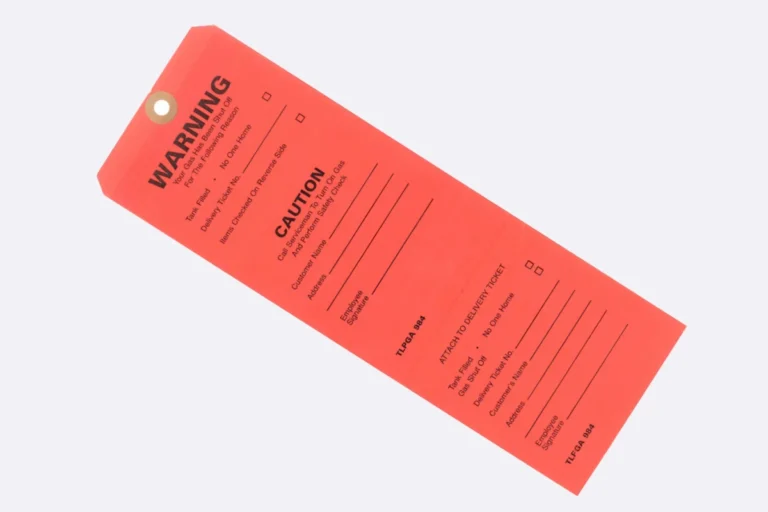
Starting a website or online project often comes with costs, but getting a domain name doesn’t have to be one of them. Many people don’t realize that you can get a legitimate domain name for free through several different methods including free domain registrars, web hosting package deals, and website builder promotions. While free domains sometimes come with limitations, they provide a perfect starting point for personal projects, student websites, or testing business ideas.
Free domain options range from true freebies like those offered by Freenom (for TLDs like .tk, .ml, and .ga) to first-year free domains included with hosting packages from companies like GoDaddy. Companies such as Amazon Web Services and Google also offer permanently free options for those looking to host simple projects without spending money. The key is understanding what trade-offs might come with your free domain, such as limited features or required renewals.
Before jumping on a free domain offer, take time to consider your long-term needs. Many hosting providers include free domains with their plans, which can be a better value than standalone free domains if you need hosting anyway. Website builders also frequently offer domain name promotions that can save you money while providing easy-to-use tools for building your site.
1. Get a Free Domain with Web Hosting
Many hosting providers include a free domain when you sign up for a hosting plan.
- Examples: Hostinger, Bluehost, and GoDaddy often bundle a free domain for the first year (source: Hostinger).
- Best for: Businesses or bloggers who need both hosting and a domain.
- Tip: Check renewal costs — the domain is free for the first year, but you’ll usually pay standard rates afterward.
2. Use a Website Builder with Free Domain
Some website builders offer free custom domains if you subscribe to their paid plans.
- Examples: Wix, Squarespace, and Weebly.
- Best for: Beginners who want an all‑in‑one website solution.
- Note: The free domain is typically included for the first year.
3. Register a Free Domain Extension
Certain providers let you register domains with less common extensions at no cost.
- Examples: Freenom offers
.tk,.ml,.ga,.cf, and.gqdomains (source: CreditDonkey). - Best for: Personal projects, testing, or temporary websites.
- Caution: These free extensions may look less professional and can have restrictions.
4. Claim a Free Subdomain
If you don’t need a custom .com or .co.uk, you can use a subdomain provided by a host or builder.
- Examples:
yourname.wordpress.comoryourbrand.wixsite.com. - Best for: Hobby sites, portfolios, or learning web design.
- Downside: Less professional, harder to brand, and you don’t own the domain.
5. Look for Special Promotions
Domain registrars and hosting companies sometimes run promotions where you can claim a domain for free.
- Tip: Watch for seasonal sales (Black Friday, New Year, etc.).
Key Things to Consider
- Ownership: Always check if you truly own the domain or if it’s tied to a subscription.
- Renewal Costs: Free domains usually cost money after the first year.
- Professionalism: A
.comor country‑specific domain looks more credible than free alternatives.
✅ Bottom Line
Yes, you can get a domain name for free — but it usually comes with conditions. The most practical way is to bundle it with hosting or a website builder subscription. For personal projects, free domain extensions or subdomains can work, but for a professional website, investing in a paid domain is often the smarter long‑term choice.
Key Takeaways
- Free domains are available through specialized registrars like Freenom or as bonuses with hosting plans and website builders.
- Most hosting companies offer first-year free domains while some services provide permanently free options with certain limitations.
- Consider your long-term website goals when choosing between truly free domains versus promotional offers that include domains with other services.
Understanding Domain Names
Domain names are the online addresses that people use to find websites. They play a key role in establishing your online identity and making your site accessible to visitors.
What Is a Domain Name?
A domain name is your website’s address on the internet. Think of it as your digital street address that people type into their browsers to visit your site. For example, in “google.com,” “google” is the domain name and “.com” is the top-level domain (TLD).
Domain names work by connecting to IP addresses, which are the actual numerical addresses computers use to find websites. Instead of remembering complex numbers like 192.168.1.1, people can simply type in something like “yourwebsite.com.”
When you register a domain name, you’re essentially reserving that name within the internet’s Domain Name System (DNS) for a specific period. This registration gives you exclusive rights to use that particular name for your website.
Different Types of TLDs
Top-Level Domains (TLDs) are the extensions that appear at the end of domain names. The most common TLDs include:
- .com: The most popular and trusted TLD, ideal for commercial businesses
- .net: Originally for network organizations, now used broadly
- .org: Typically used by non-profit organizations
- .edu: Reserved for educational institutions
- .gov: Used exclusively by government entities
There are also country-code TLDs (ccTLDs) like .uk, .ca, or .au that represent specific countries or territories.
Newer TLDs have emerged in recent years, including industry-specific options like .store, .photography, or .tech. These can help make your domain name more descriptive and memorable for your specific business type.
The Importance of a Quality Domain Name for Your Online Business
Your domain name serves as your first impression online. A good domain name helps visitors remember your website and find you again. It should be simple, relevant to your business, and easy to spell.
Domain names also affect your search engine ranking. Keywords in your domain can help search engines understand what your website is about, potentially improving your visibility.
Your domain also affects brand perception. A professional domain name builds trust with potential customers. Using free domains might save money initially, but they can appear unprofessional to visitors.
For online businesses, your domain is part of your brand identity. It appears on business cards, social media, and marketing materials. Choosing the right domain name is an investment in your online presence that can pay dividends through increased traffic and customer trust.
Exploring Free Domain Options
Getting a free domain name can save you money when starting a website. There are several legitimate ways to obtain domains without paying, though each comes with specific considerations.
How Free Domains Work
Free domains typically come through one of two main channels. Web hosting services often include a free domain name for your first year when you purchase a hosting package. This is a common strategy used by companies like Bluehost and HostGator to attract new customers.
The second option is using free domain registrars, which provide domains with certain limitations. These usually come with non-standard extensions like .tk, .ml, or .ga rather than premium extensions like .com or .org.
Some website builders like Wix or Squarespace include a free domain with their paid plans. Students can sometimes get special offers through programs like GitHub Education, which provides free domains through partners like Namecheap.
Free domains generally require renewal after the initial period, often at standard pricing.
Comparing Free and Paid Domains
| Feature | Free Domains | Paid Domains |
|---|---|---|
| Cost | $0 initially | $10-20/year typically |
| Extensions | Limited (.tk, .ml, etc.) | Wide variety (.com, .org, etc.) |
| Ownership | Limited rights | Full control |
| Professionalism | Less professional | More professional |
| Features | Basic features | Advanced features |
Paid domains offer greater credibility for your business website. Visitors tend to trust websites with standard extensions like .com more than those with free alternatives.
Free domains often have limitations on traffic and may display ads on your site in some cases. They might also have restricted access to advanced DNS settings that you’d get with paid options.
If you’re testing an idea or creating a personal project, a free domain might be sufficient. For business purposes, investing in a paid domain is typically worthwhile.
The Pros and Cons of Free Domains
Pros:
- Zero initial cost
- Great for testing ideas
- No financial commitment
- Easy to set up
- Perfect for temporary projects
Free domains allow you to establish a web presence without any upfront investment. This makes them ideal for students, hobbyists, or entrepreneurs testing concepts before committing resources.
Cons:
- Less professional appearance
- Limited extension options
- Renewal fees may be higher
- Potential for unexpected service changes
- Fewer features and customization options
Many free domains come with subtle disadvantages. Your domain might be reclaimed if it doesn’t receive enough traffic. Some services place restrictions on how you can use the domain or limit the number of pages you can create.
Free domains may also lack privacy protection, meaning your personal information could be publicly visible in WHOIS directories unless you pay extra for privacy features.
Navigating Free Domain Registration
Getting a free domain name can save you money while launching your online presence. Several options exist, but understanding the process and limitations is crucial for success.
Where to Find Free Domain Name Registration
Several providers offer free domain names through different methods. Web hosting companies often include a free domain with their hosting plans. For example, some hosts offer a free domain when you use specific promo codes like “DOMFREE” during checkout.
Freenom was once a popular option for truly free domains with extensions like .tk, .ml, .ga, .cf, and .gq. However, many users now report service issues with this platform.
Some companies offer promotional deals during special events or for first-time customers. You can also find free domains by:
- Opting for less popular TLDs (Top Level Domains)
- Taking advantage of multi-year registration discounts
- Checking web development platforms that include domains
- Looking for educational programs offering free domains to students
Remember that most “free” domains require you to pay for hosting or other services.
Step-by-Step Guide to Registering a Free Domain
To register your free domain, follow these straightforward steps:
Research providers – Find a reputable company offering free domains with hosting plans.
Choose your domain name – Select something memorable, short, and relevant to your brand or purpose.
Check availability – Use the provider’s search tool to see if your chosen name is available.
Select your TLD – Choose from available extensions (.com, .org, etc). Free domains often come with less popular TLDs.
Complete registration – Create an account with the provider and follow their registration process.
Verify ownership – Most providers require email verification to confirm your domain ownership.
Configure DNS settings – Set up your Domain Name System to connect your domain to your website hosting.
Many hosting providers offer control panels that make DNS management simple, even for beginners.
Common Pitfalls in Free Domain Registration
Free domains often come with limitations you should understand before proceeding. Many “free” domains are only free for the first year, with renewal fees afterward. Mark your calendar for renewal dates to avoid unexpected charges.
Limited functionality is another concern. Some free domains restrict:
- Number of subdomains you can create
- Email accounts you can associate with the domain
- Traffic volume allowed
Privacy protection may be missing from free domain packages. Without it, your personal registration information becomes publicly accessible in the WHOIS database.
Be cautious about domain ownership. Some free domain providers may technically own your domain name, limiting your control over it. Read the terms of service carefully before registration.
Free domains might also have poor SEO performance compared to premium TLDs, affecting your website’s visibility in search results.
Website Builders with Free Domain Offers
Several website builders offer free domain names as part of their packages. These platforms combine easy-to-use site building tools with domain registration, saving you both time and money as you launch your online presence.
Selecting the Right Website Builder
When choosing a website builder with a free domain offer, look at the fine print carefully. Website.com provides domain names bundled with their website templates and hosting services. This all-in-one solution makes it simpler to get your site up quickly.
Neo offers a straightforward approach: sign up for their service, select your free custom domain, and start building. This works well for beginners who want a streamlined process.
Consider these factors when selecting a platform:
- Contract length – Most free domains require a 1-year commitment
- Renewal costs – Check what you’ll pay after the initial free period
- Website limitations – Some builders restrict features on basic plans
The ideal choice depends on your specific needs. Business websites may require more features than personal sites.
Benefits of Using Site Builders for Free Domains
Using a site builder with a free domain offer provides several advantages. Canva’s website builder lets you create professional websites on your own domain in minutes with customizable templates. This saves you the separate steps of purchasing a domain elsewhere.
You’ll enjoy a simplified workflow since everything is managed in one place. Domain configuration happens automatically, eliminating technical hurdles that often frustrate beginners.
Cost savings are significant. A typical domain costs $10-15 annually, so bundled offers provide real value. For business websites, this means more budget for other marketing activities.
Many builders include additional benefits like:
- Free SSL certificates for security
- Professional email addresses
- Basic SEO tools
- Mobile-responsive designs
These integrated solutions make launching your website faster and more affordable than purchasing components separately.
Leveraging Web Hosting Plans for Free Domains
Many web hosting companies offer free domain registration when you purchase their hosting packages. This strategy can save you money while providing essential services for your website in one convenient package.
Understanding Hosting Plans with Free Domain Inclusions
Most shared hosting providers include a free domain name for the first year when you sign up for their services. This offer typically applies to popular domain extensions like .com, .org, and .net. When you choose a hosting plan with a free domain, you’ll need to pay attention to renewal costs.
After the initial period (usually 12 months), you’ll need to pay the standard renewal rate for your domain. This can range from $10-20 per year depending on the extension and registrar.
The domain registration process is usually integrated directly into the hosting purchase workflow, making it simple to set up both services simultaneously. Many providers also offer:
- Free SSL certificates
- One-click WordPress installation
- Email accounts with your domain name
- Domain privacy protection (sometimes at extra cost)
Choosing the Best Web Hosting Plan for Your Needs
When selecting a web hosting plan with a free domain, consider your website’s specific requirements. Budget shared hosting plans might start around $3-5 per month, while more robust options range from $10-30 monthly.
Look for providers that offer scalability as your site grows. Starting with a basic shared hosting plan might be perfect initially, but you’ll want the option to upgrade later.
Check the fine print regarding domain ownership. Some companies may register the domain in their name rather than yours, which could cause problems if you decide to switch hosts later.
Key factors to evaluate include:
- Server reliability and uptime guarantees (aim for 99.9% or higher)
- Customer support quality and availability
- Bandwidth and storage limits
- Number of websites allowed on your plan
- Control panel interface (cPanel, Plesk, or proprietary systems)
Compare several providers before making your decision, as features and pricing vary significantly between companies.
Managing Your Domain and DNS Settings
Once you’ve secured your free domain, proper management of DNS settings is crucial for making your website accessible. DNS settings determine how users find your site and how services like email work with your domain.
The Basics of DNS Configuration
DNS (Domain Name System) acts as the internet’s phonebook, connecting your domain name to your website’s actual location. When managing a free domain, you’ll typically access DNS through your provider’s dashboard.
Most free DNS hosting services offer simple interfaces to handle basic settings. The most important records include:
- A Records: Connect your domain to an IP address
- CNAME Records: Link your domain to another domain name
- MX Records: Direct email to the correct server
- TXT Records: Verify domain ownership and set security policies
Free providers like ClouDNS and Namecheap FreeDNS offer user-friendly dashboards for managing these settings without technical expertise.
Updating DNS Records for Your Free Domain
When making changes to your domain’s DNS settings, understanding propagation time is essential. DNS updates can take anywhere from minutes to 48 hours to fully spread across the internet.
To update records for your free domain:
- Log into your provider’s control panel
- Navigate to the DNS management section
- Select the record type you want to modify
- Enter the required values (like IP addresses or hostnames)
- Save your changes
Some providers offer dynamic DNS updating for home networks with changing IP addresses. This feature automatically updates your domain’s DNS records when your IP changes.
For websites, ensure your A record points to your web host’s server. Free domains from DNSExit are fully functional for websites, emails, and FTP servers once DNS is properly configured.
Frequently Asked Questions
Free domain names come with specific requirements and limitations that you should understand before making a decision. Many websites advertise free domains, but the actual process and conditions vary significantly.
What steps should one take to obtain a cost-free domain registration?
You can get a free domain by using special promo codes like “DOMFREE” with certain registrars. These codes typically apply only to your initial registration period.
Another common approach is signing up for a web hosting package that includes a free domain. Many hosting companies offer free domain registration when you purchase a hosting plan with a 12-month or longer commitment.
Website builders like Wix also provide free domains as part of their premium packages. This can be a good option if you need both a domain and website creation tools.
Are there reputable registrars that provide complimentary domain names?
Yes, several reputable companies offer free domains. Many major hosting providers regularly run promotions that include free .com domains when you sign up for their hosting services.
Website builders such as Wix offer free domain options with their premium plans. These are legitimate businesses that provide reliable service.
Free subdomain options are also available through platforms like WordPress.com, Blogger, and Github Pages. While not full domains, they provide a web address at no cost.
What limitations might apply to free domain name services?
Free domains often come with time restrictions, typically covering only the first year of registration. After this period, you’ll need to pay standard renewal rates.
Many free domain offers require you to purchase other services like hosting or email packages. The true cost is bundled into these required services.
Privacy protection features may not be included with free domain registrations. You might have to pay extra to keep your personal information hidden from public WHOIS databases.
Is it possible to acquire a .com top-level domain at no cost?
Yes, you can get a free .com domain through certain hosting providers during promotional periods. Companies like Domain.com and others sometimes offer first-year free registration with their hosting packages.
Several web hosting companies include a free .com domain when you sign up for their hosting plans. This is usually limited to the first year of service.
Remember that while the initial registration might be free, renewals typically cost between $10-20 per year after the promotional period ends.
How does one secure a free domain name without mandatory hosting services?
Free domain registrars exist but typically offer less common domain extensions rather than popular ones like .com or .org. These might include newer TLDs or country-specific domains.
Freenom provides domains with extensions like .tk, .ml, .ga, .cf, and .gq at no cost. These can be registered without purchasing hosting, though they may have usage restrictions.
You might also consider temporary domains for testing purposes, which some services provide for limited periods without requiring hosting purchases.
Can free domain names be completely owned, or are there strings attached?
Free domains typically come with ownership limitations. You rarely get full, permanent ownership without eventual payment or service commitments.
Most free domains require renewal at standard rates after the initial free period expires. If you don’t renew, you risk losing the domain name entirely.
Terms of service for free domains may include restrictions on usage, content type, or the ability to transfer the domain to another registrar. Always review these terms carefully before proceeding.






